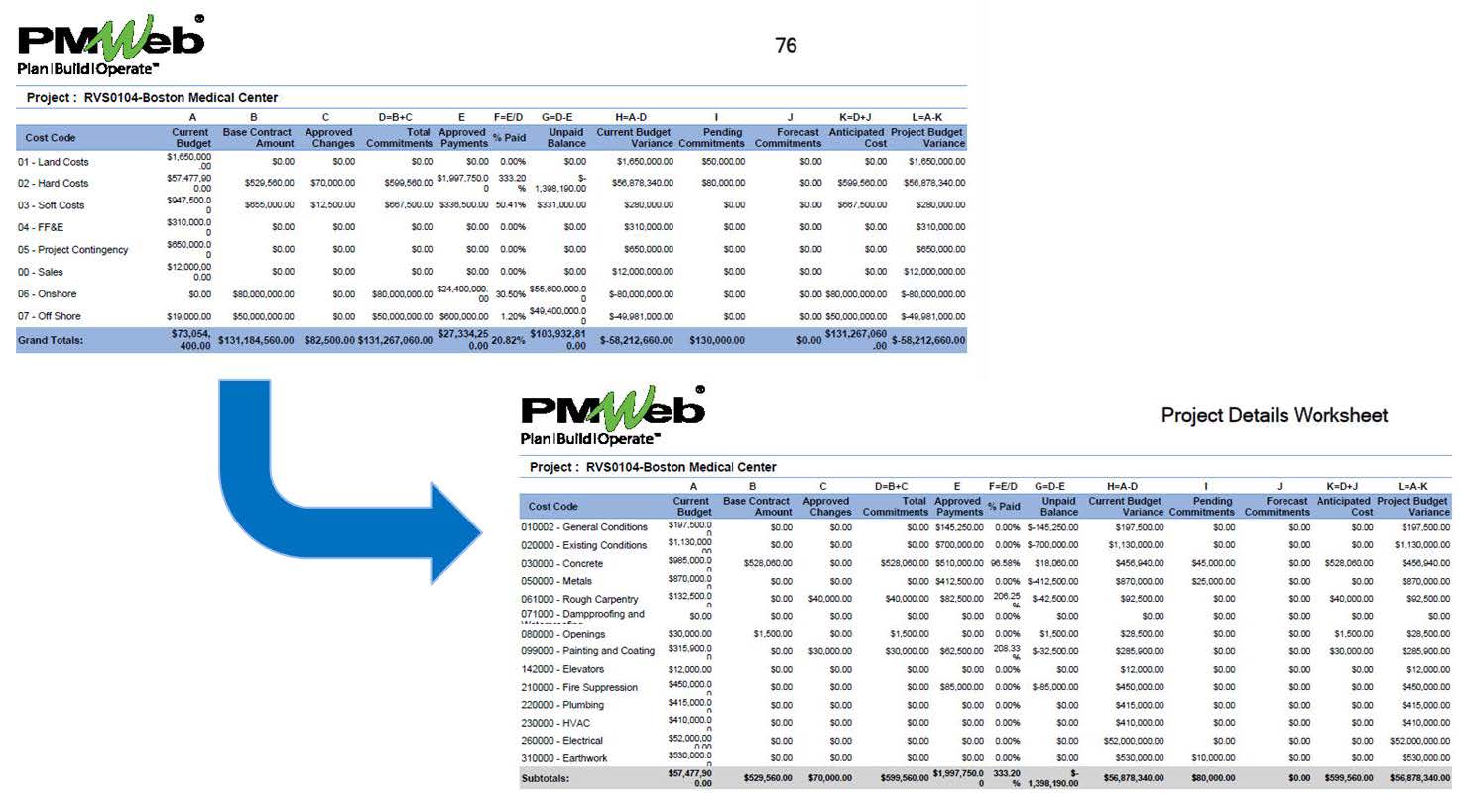For many real estate developers including master developers, the Build-to-Suit Lease is one of the options available for developing projects on their portfolio of undeveloped lands. An option that targets business owners who have requirements for highly customized and brand-new property that is Best Suited to run their operations. Those include education providers, healthcare providers, supermarkets, banks, large corporations, hotel and resort operators, logistics warehouses, staff accommodation, data centers, car distributors, large retailers to list a few. For those business owners, choosing the Build-to-Suit Lease is the preferred option to have a newly built freestanding property without the requirement to come up with the initial capital themselves. At the same time, it is also a preferred option for the real estate developer who will be securing a steady stream of rent payments for 10 to 20 years that guarantees the minimum required yield which allows financing the project at a very attractive interest rate. In addition, most of those Build-to-Suit Lease facilities will have a positive increase to the value of adjacent land plots owned by the real estate developer even before the new property is built.
For some of the build-to-suit lease real estate development projects, the real estate developer and the business owner or tenant might agree on an open-book project cost policy especially when the business owner has the requirement for the property to be constructed in accordance with their particular specifications with the exact required sizes and layouts. In addition, this open-book policy will be needed when the business owner requires adding or modifying some of the property assets or systems. The agreed terms of the lease will be adjusted by applying the pre-agreed desired percentage return or yield to the costs of the project. These costs include for example land costs, site improvements, the costs of the actual building, legal costs, project management consultant, design consultant, supervision consultant, and other common expenses.To enable having the open-book policy, the real estate developer needs to deploy a Project Management Information System (PMIS) like PMWeb to enable the tenant to have the required access. Achieving this required implementing five types of cost-related documents that will be managed, monitored, evaluated, and reported on in PMWeb. The first of those is the mutually agreed project budget and all adjustments issued later on while the second will be the commitment contract agreements with all entities that will have a role in delivering the property. Those commitment contracts will also cover all potential changes, change orders, and interim payment certificates for the actual cost incurred. The miscellaneous invoices and timesheets for project developer resources will be the third and fourth cost documents. The last cost document to be managed will be the lease agreement with the business owner. All those cost documents will have the cost breakdown structure (CBS) common for all.
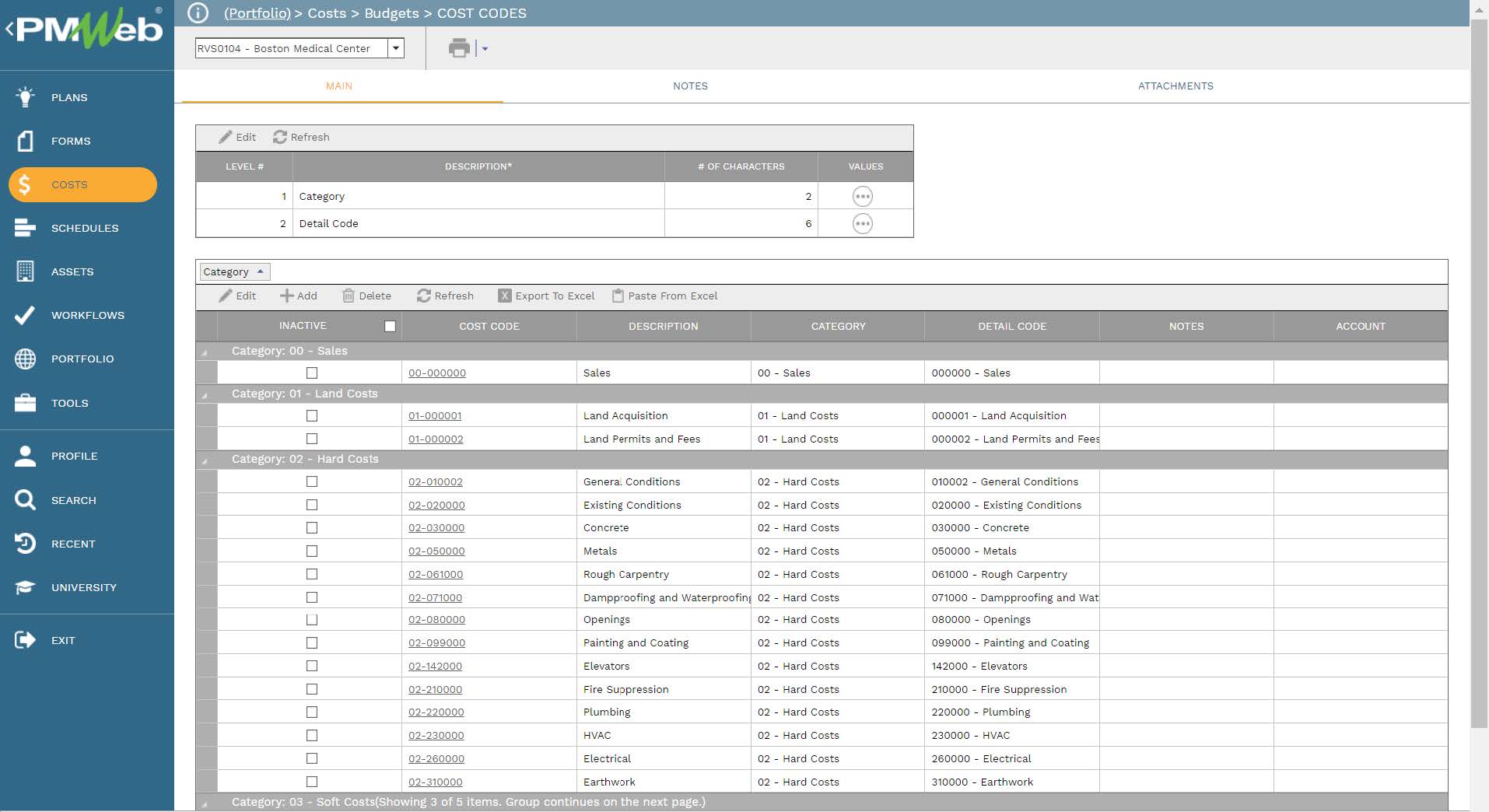
The next step is to come up with the detailed baseline budget that needs to be reviewed and approved by the real estate developer as well as the tenant. The budget should include all possible expenses including the cost of the land, professional services, real estate development management team, construction contracts, permits and fees, project contingency, etc. The budget level of detail will depend on the level of detail set in the cost breakdown structure (CBS).
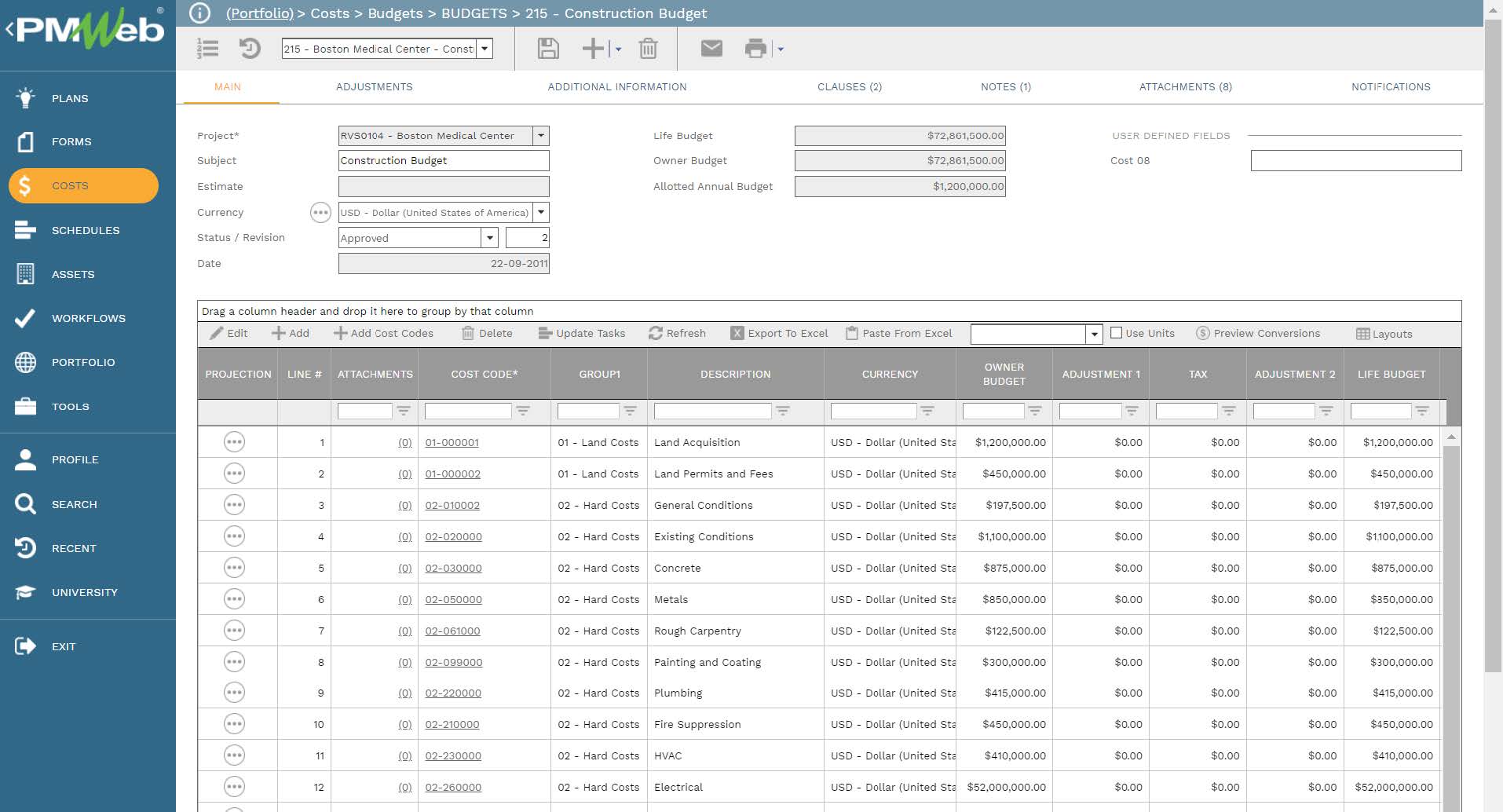
After approving the baseline budget, any omissions or additions to the budget baseline or even transfers from one cost center to another must be jointly approved by the real estate developer and the tenant. For each budget adjustment, full details must be provided for the review and approval process.
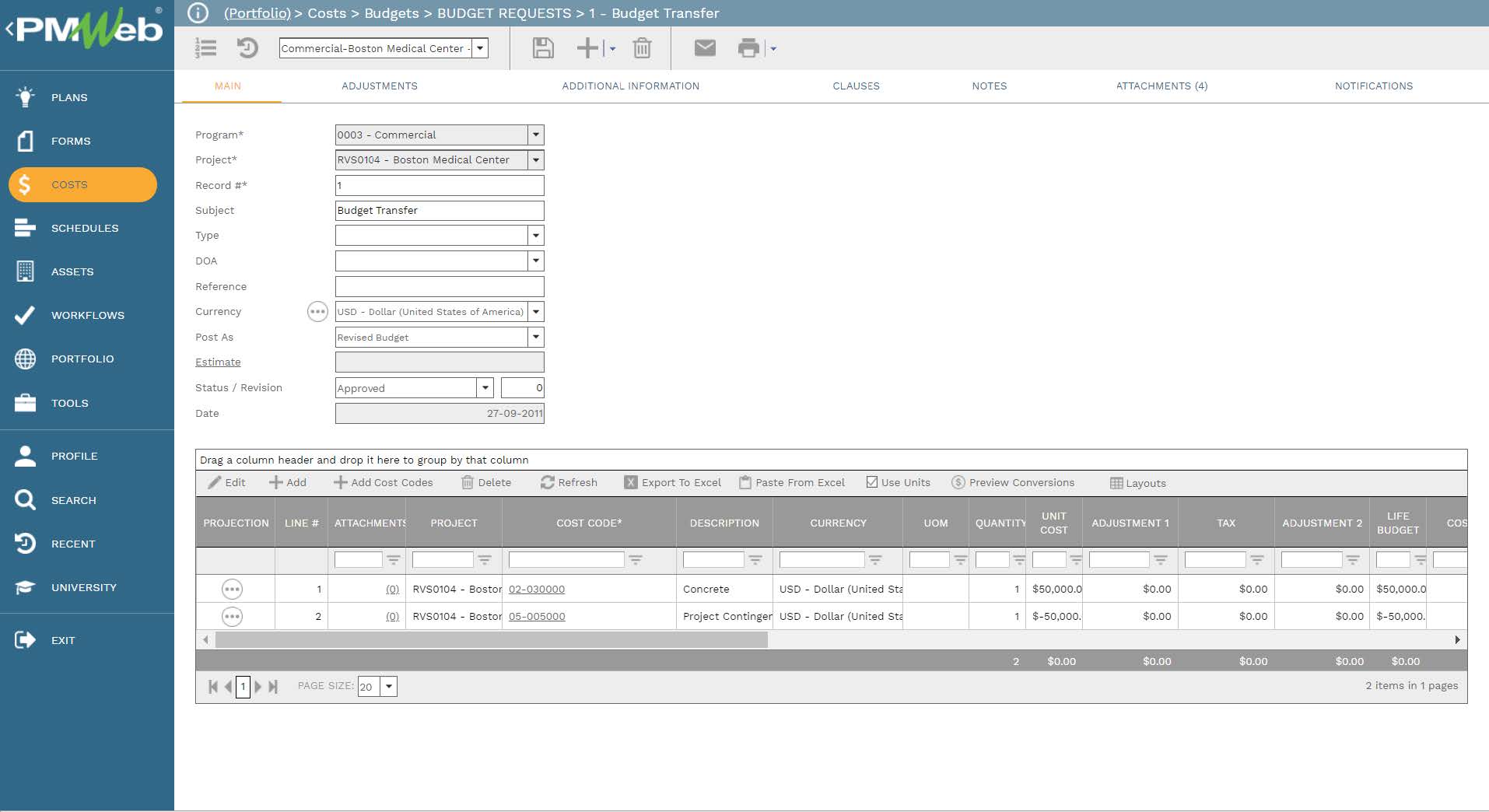
The commitment contracts will be used to capture all professional services, construction as well as other required agreements. It is highly recommended that the complete baseline budget gets mapped into commitments even for the real estate developer’s own expenses as well as the expenses associated with building permits and fees. This will build confidence in the baseline budget by being achievable as well as reduce the likelihood of having disputed expenses that were not originally accounted for.

The potential change order process is a very important business process that provides an early warning notification of any possible event that could impact the awarded commitment contract value. This will ensure a structured review of those potential change orders and only those changes that are a must requirement for the project must be considered as change orders. Similar to all other cost documents, those potential changes need to be reviewed and approved by the real estate developer and the tenant.
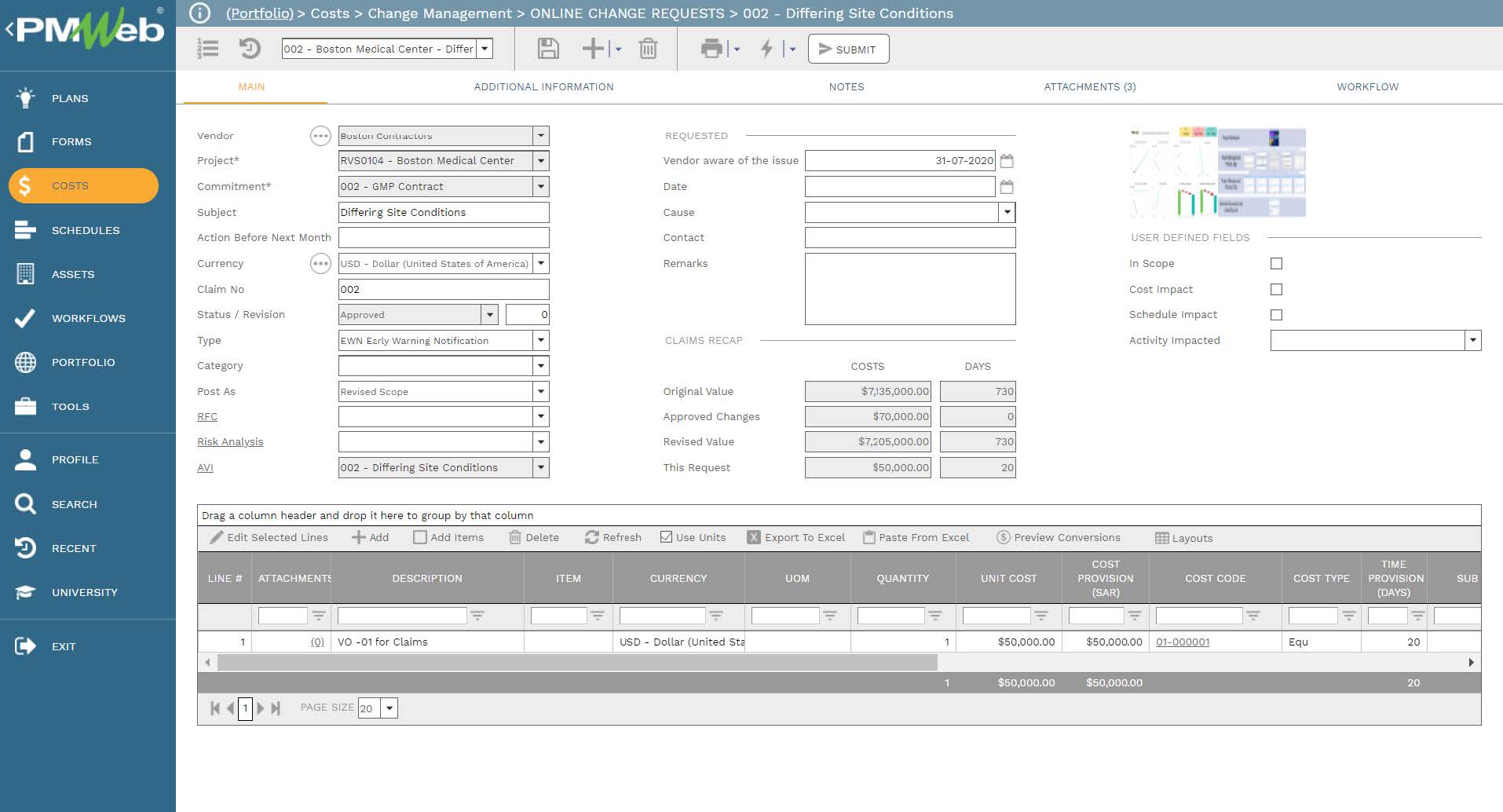
This leads to the change order business process which will be used to manage all cost and/or schedule adjustments to the awarded commitment contracts. Some of those change orders could be requested by the tenant or by any of the entities that have a commitment contract agreement with the real estate developer.
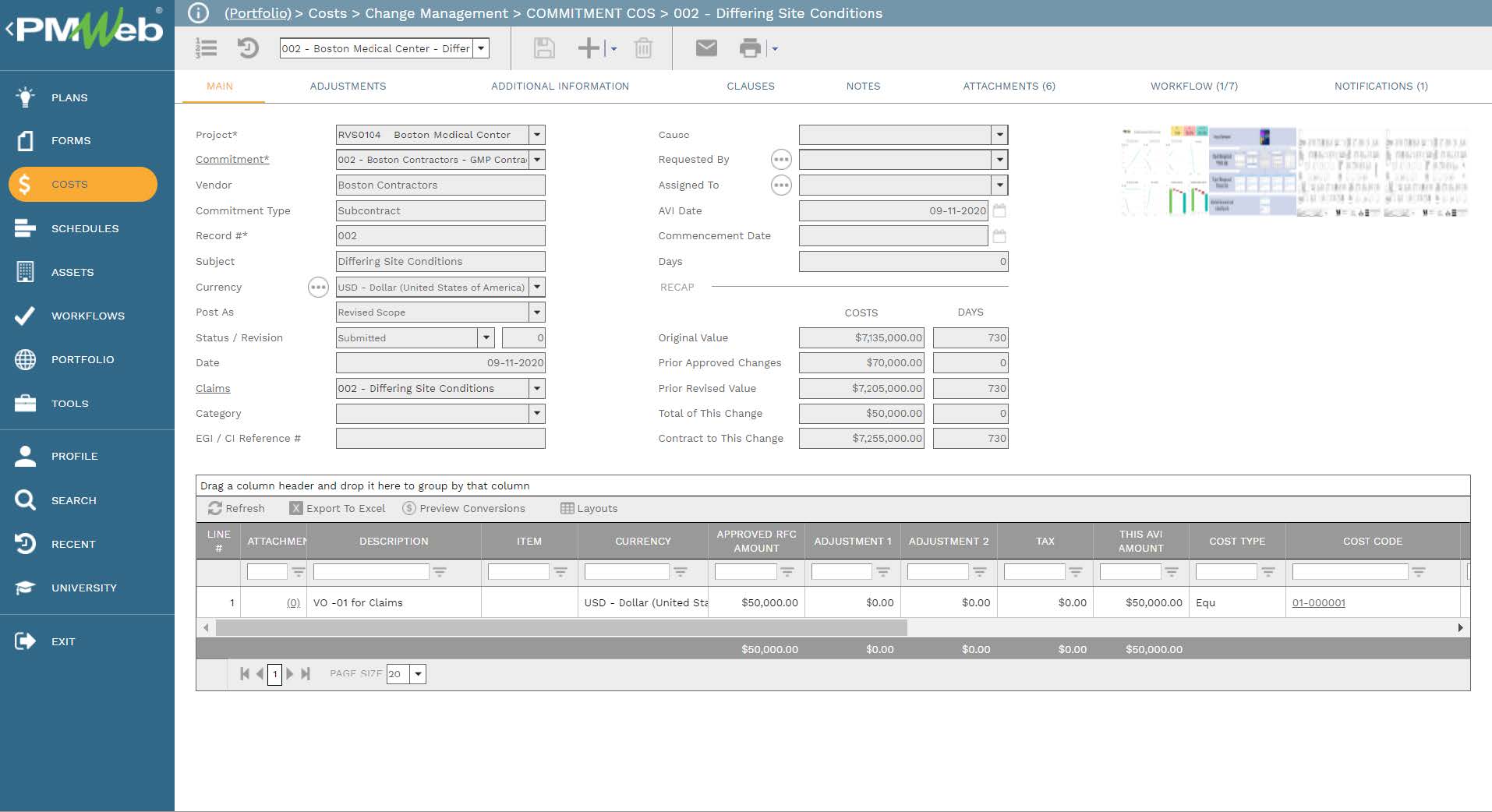
To ensure that the alignment between the current approved budget and the revised commitment contracts is always enforced and maintained, the PMWeb change request module will be used to associate each budget adjustment or transfer with the associated change order or orders approved for the awarded commitments. Each generated change request record will include a detailed justification of why those changes were required.

The monthly interim payment certificate will be the process used to capture the actual expenses incurred against any of the commitment contracts. Those invoices will be based on the approved and accepted work in place, services deliverables, or monthly project management expenses. Actual payments made against those approved interim payment certificates will also be captured in PMWeb.
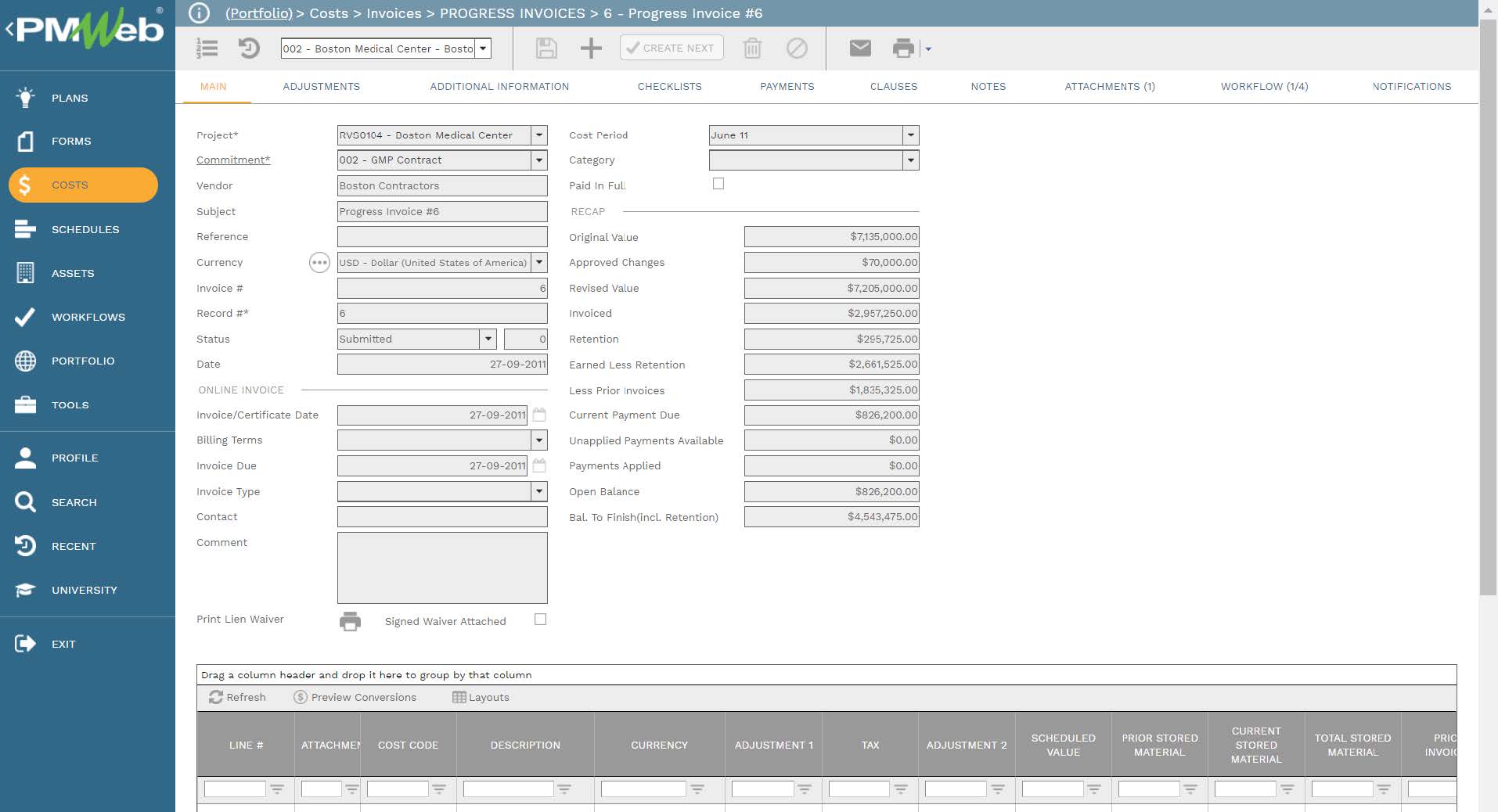
The miscellaneous invoices will be used to capture all actual expenses incurred that although are not included in any of the approved commitment contracts they are part of the approved budget baseline. It is highly recommended to limit the use of miscellaneous invoices to the absolute minimum and instead of using the commitment contracts as the basis for capturing all types of actual expenses.
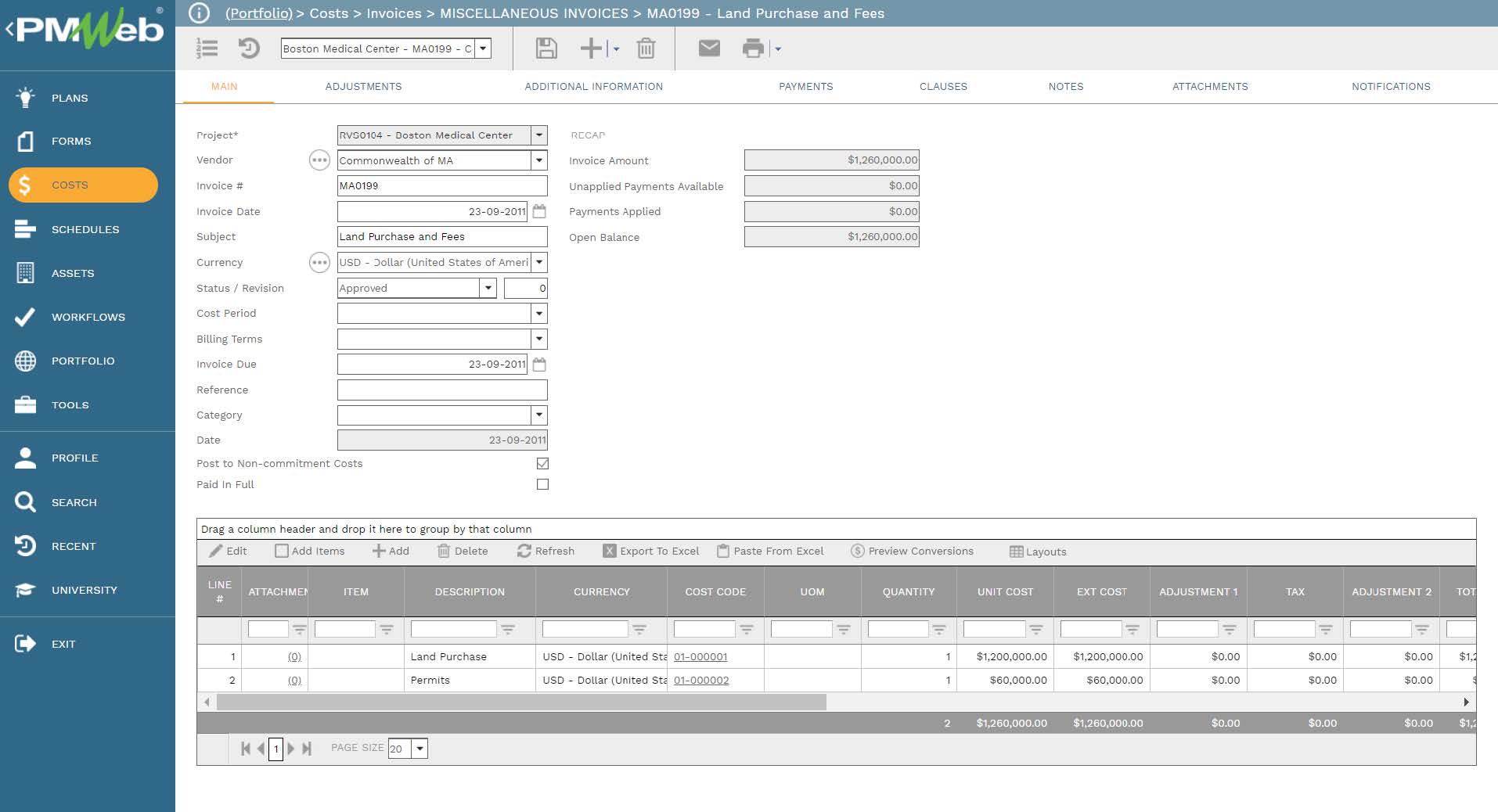
The timesheet for resources charged against the project is another example of incurred actual expenses that are not part of any of the approved commitment contracts. Timesheets will be mainly used to capture the expenses of the real estate developer team in managing the project which was approved and included in the baseline budget. Having said so, it is highly recommended not to use timesheets and instead have a commitment contract for the real estate development management expenses.
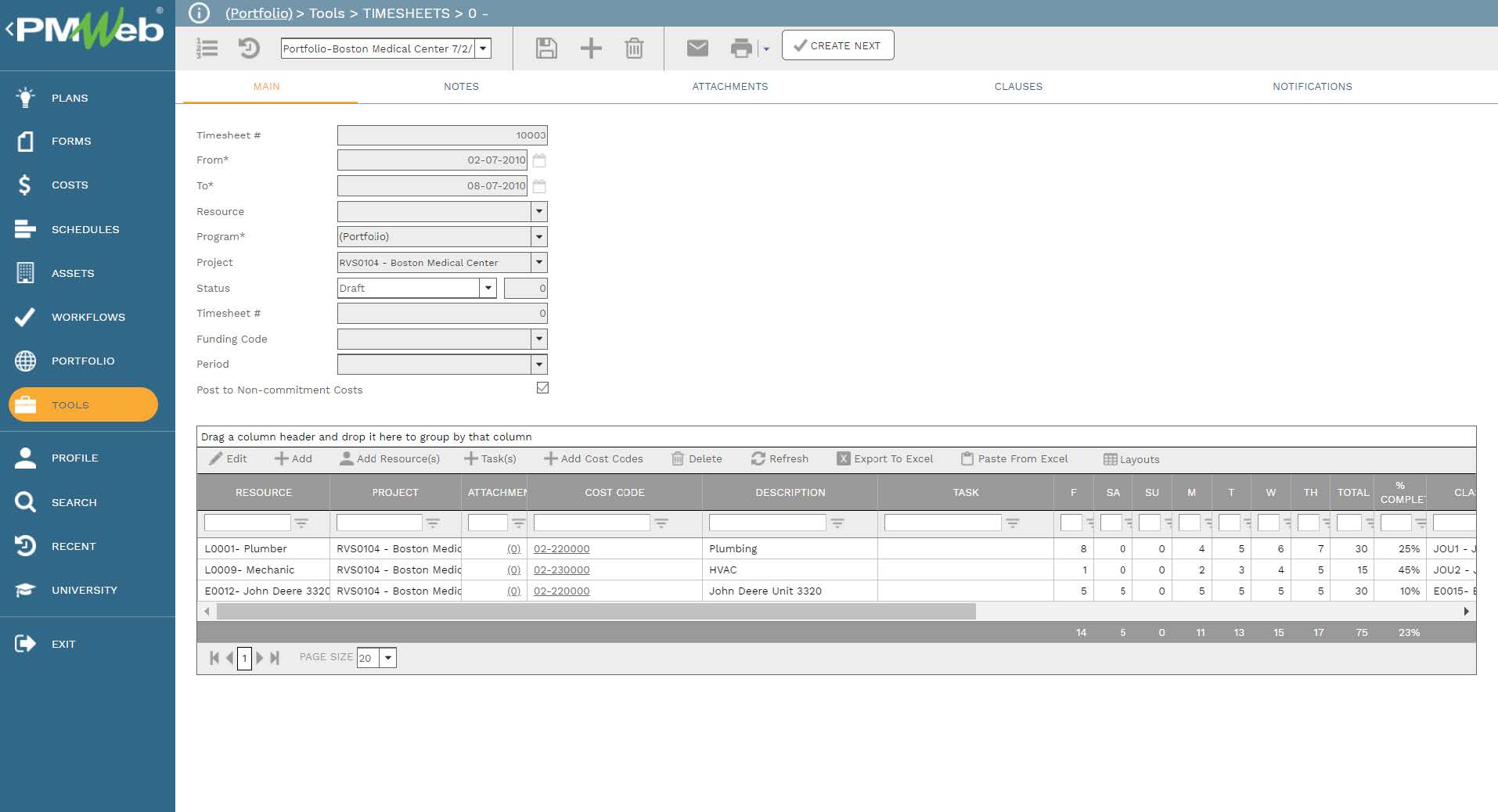
The last cost document to be managed in PMWeb is the Lease Agreement between the real estate developer and the tenant. This revenue or income agreement will not be used to only capture the details of the Build-to-Suit Lease agreement but also all changes to the baseline agreement which need to be approved by both parties. The agreement will also be used to capture the planned and actual lease payments which will be due when the real estate property is built and transferred to the tenant to operate. When the project is handed over to the tenant, the tenant will become responsible for the facility maintenance contracts and other expenses including property taxes and fees that could be required by the local authorities.
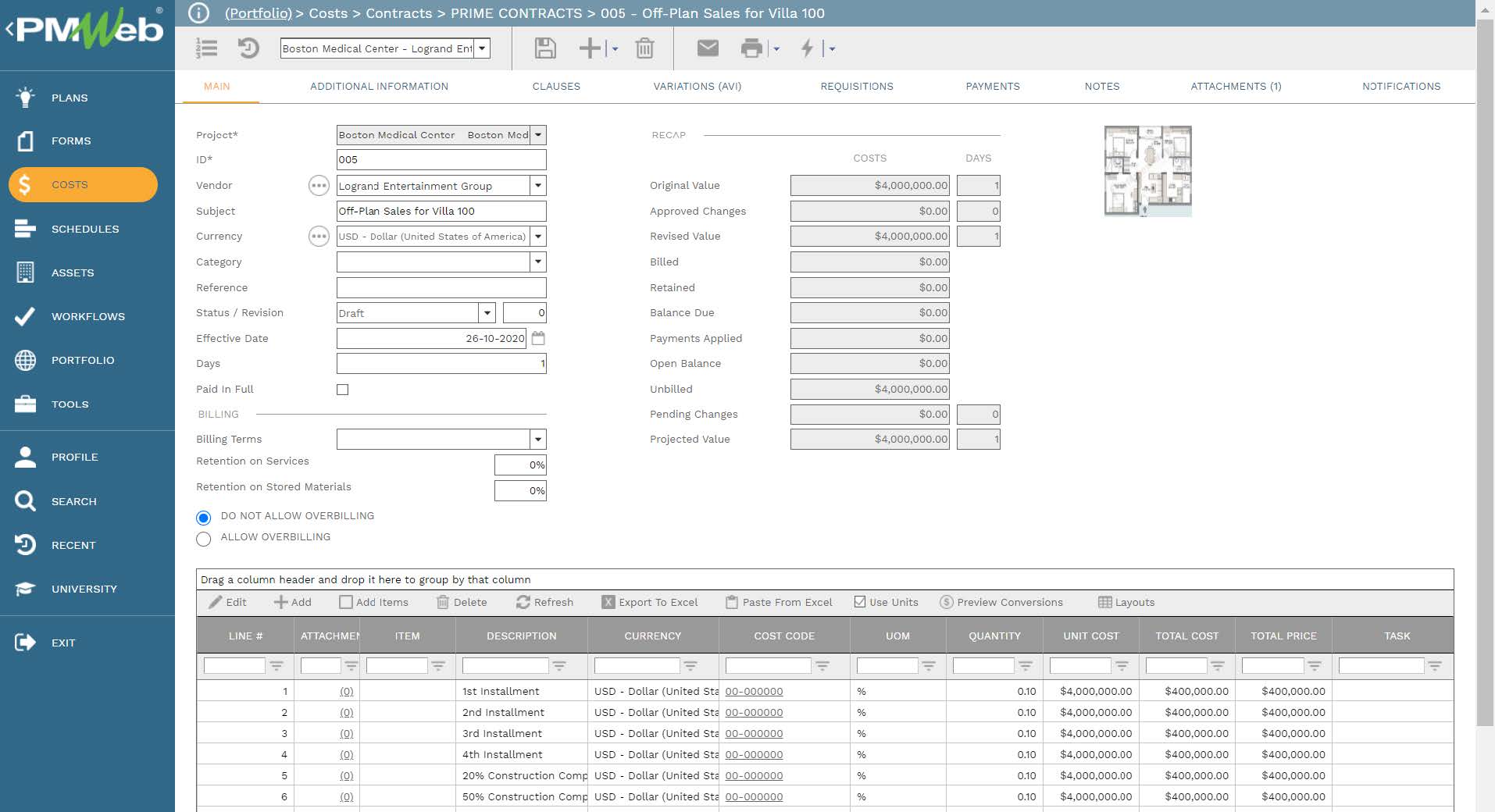
For all records of the cost-related business processes detailed above, PMWeb allows attaching all types of supportive documents to them. Those could include the land deed, drawings, pictures, permits, no-objection certificates, insurances, guarantees, and other types of documents that could be required. In addition, PMWeb allows linking records from different transactions to any record of another cost-related business process.
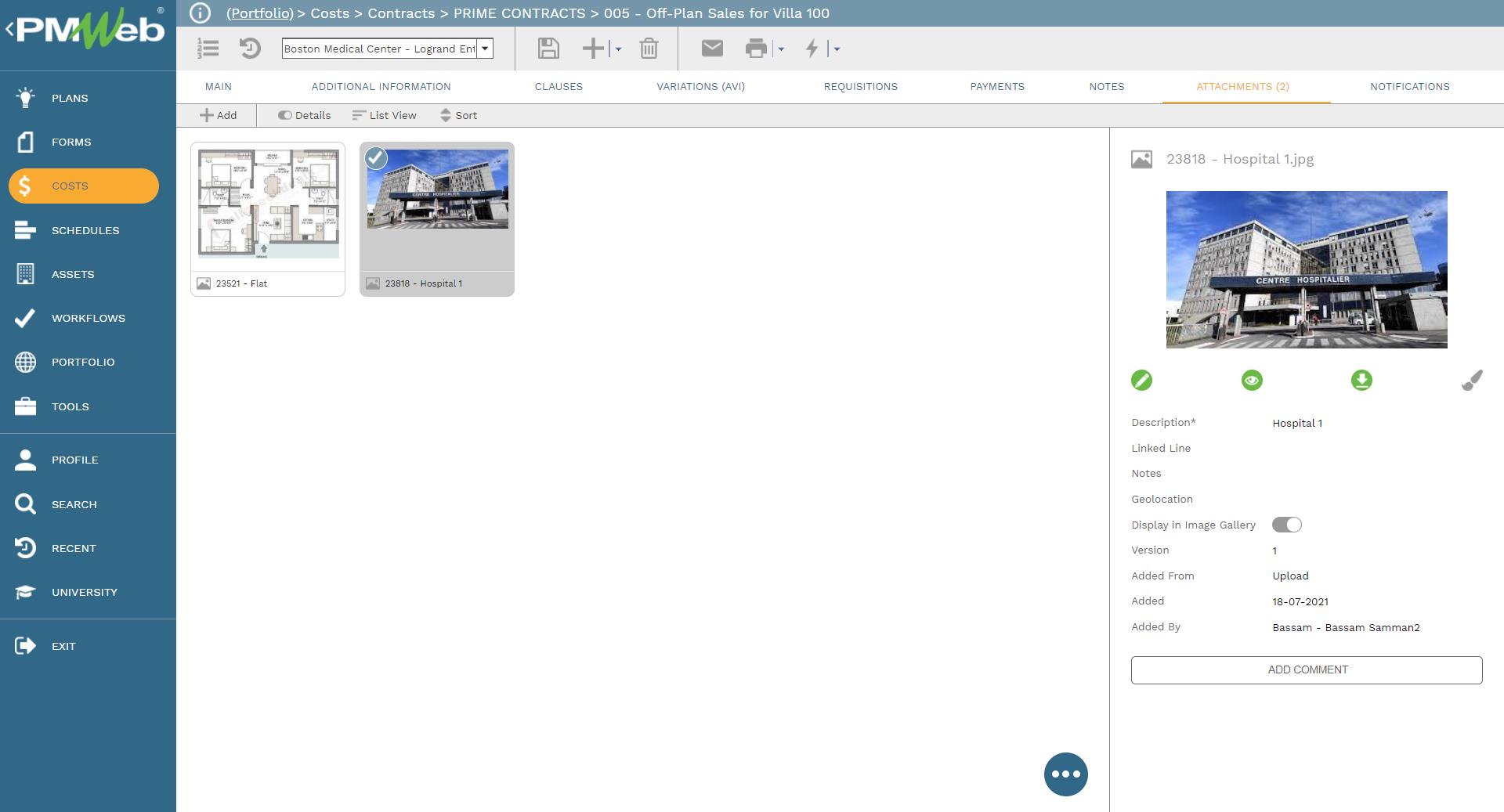
To formalize the review and approval of the different records of the cost-related business processes, PMWeb allows assigning a unique workflow for each business process type. The workflow will detail the sequence for carrying out the review and approval tasks including the individuals from the real estate developer and tenant assigned to each task, duration of the task, and available actions to take. The workflows will also embed the authority approval levels as detailed in the agreed Delegation of Authority (DoA) matrix.
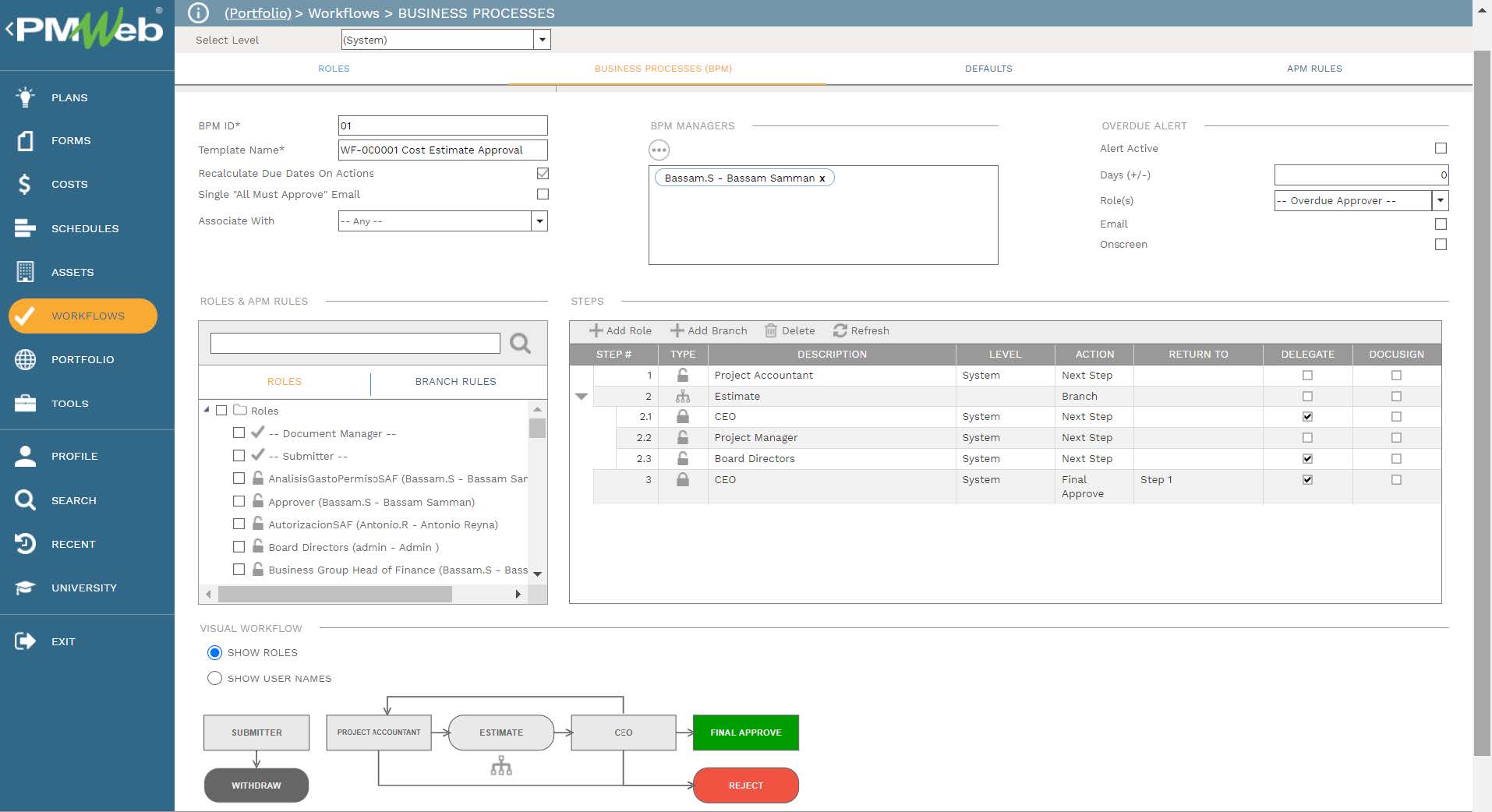
PMWeb allows the real estate developer and tenant to report on each one of the cost management-related business processes as well as have a report that consolidates the financial status of those transactions that will be structured and grouped by the cost breakdown structure (CBS) levels set for the project. The report can be designed to allow the reader to drill down from the summarized report level into a more detailed report level all the way until reaching the cost transaction that was the source for the reported cost value.
